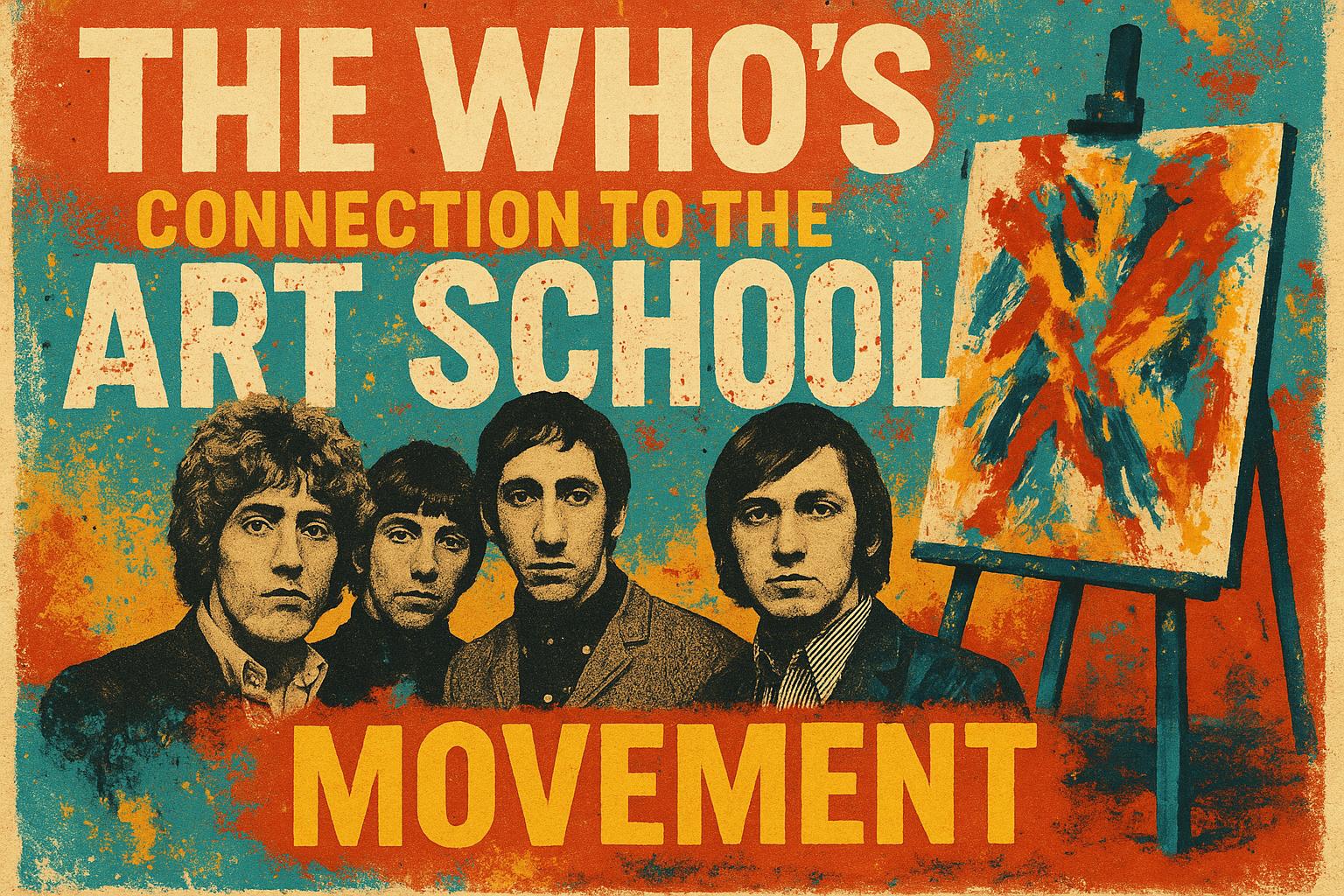The Who: A Brief Overview
The Who, originating from the dynamic music scene of the 1960s, has remained one of the most influential rock bands in the history of popular music. The band’s members—Pete Townshend, Roger Daltrey, John Entwistle, and Keith Moon—played a pivotal role in shaping the sound of rock music while also leaving an indelible mark on popular culture. Their performances were known for their intense energy and innovative techniques, reflecting not only their musical prowess but also their artistic influences. The band’s connection to the art school movement, particularly through guitarist and songwriter Pete Townshend, highlights a creative synergy that profoundly affected their music and stage presence.
Art School Movement: A Cultural Revolution
The mid-20th-century art school movement in Britain was a period marked by significant change and evolution in the creative arts. This movement emphasized creativity and experimentation, encouraging an interdisciplinary exchange of ideas across arts and education domains. Art schools became hotbeds of innovation, providing an environment where the traditional boundaries of art, design, and music could be transcended. In this atmosphere of creative cross-pollination, numerous renowned musicians and bands emerged, drawing upon a rich tapestry of influences to develop their unique styles.
Pete Townshend and Ealing Art College
One of the most direct connections between The Who and the art school movement is Pete Townshend’s time at Ealing Art College in London. Townshend attended this institution between 1961 and 1964, where he was exposed to various forms of art and avant-garde theories. This exposure had a profound impact on his work with The Who. Townshend studied graphic design and was introduced to the philosophies of Gustav Metzger, a forerunner in the auto-destructive art movement. Metzger’s ideas on using art as a medium of both creation and destruction significantly shaped Townshend’s conceptual approach to music and performance.
Influence on The Who’s Music and Performances
The education Townshend received at Ealing Art College influenced The Who’s music and stage performances profoundly. One of the most notable manifestations of this influence is the practice of instrument destruction during performances. Inspired by the concept of auto-destruction, this dramatic on-stage act was both a protest against the commercialization of music and a statement on the ephemeral nature of art. It became a defining feature of The Who’s live shows, distinguishing them from their contemporaries.
In addition to their explosive performances, The Who’s music also reflected Townshend’s art school background. The album The Who Sell Out exemplifies the integration of visual art concepts with music. This particular album was styled as a form of commercial art, blending music with advertising and pop culture elements. It showcased Townshend’s innovative approach, marrying the visual and auditory experiences in a manner that was both groundbreaking and reflective of the wider art school ethos.
Connections with Other Art School Musicians
The art school movement didn’t influence The Who in isolation. Other prominent musicians and bands, such as David Bowie, Roxy Music, and Pink Floyd, also emerged from this fertile creative environment. These artists had shared backgrounds that fostered a culture of collaboration and mutual influence within the music industry. This cross-pollination of ideas contributed to the development of new genres and pushed the creative boundaries of rock music. The relationship between these artists and their art school roots demonstrates the pivotal role that these educational institutions played in crafting the sounds of a generation.
The Legacy of The Who and the Art School Movement
The connection between The Who and the art school movement underscores the enduring impact of these institutions in shaping mid-20th-century cultural output. By merging the worlds of art and music, bands like The Who were able to challenge and redefine the norms of popular music. The art school movement’s legacy remains evident in the continued innovation and creativity seen across various artistic disciplines.
In today’s music scene, the influence of The Who and their art school background is still celebrated as a testament to the rich, interdisciplinary approaches that foster new ideas and transform cultural landscapes. This blending of artistic styles and traditions has continued to inspire countless artists, demonstrating the transformative power of education and creativity.
For those interested in delving deeper into the influence of art schools on the development of rock music, numerous resources are available. Platforms like The Guardian’s music section provide insightful discussions and analyses, highlighting the ongoing conversations about art schools’ roles in shaping music history. Interviews and retrospectives further illuminate the connections between education, creativity, and the rise of influential musicians who have left a lasting impact on the world.
